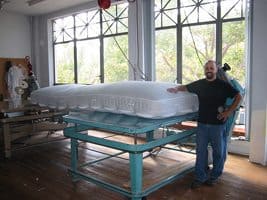BY BARBARA NELLES
The mattress industry has seen significant consolidation and contraction in the past decade and the number of small, independent manufacturers—once the bedrock of the industry—has declined.
But some venerable mattress producers continue to thrive, despite tough economic times and rapidly changing market demands.
Here, BedTimes focuses on six long-time, humble-rooted North American manufacturers to uncover the secrets of their staying power. Privately owned and mostly family run, each has been in business for at least 50 years, surviving good times and bad. Some have found success manufacturing under licensed brand names. All produce goods under their own label or for private-label and contract markets.
Both idealistic and pragmatic, each has managed to stay in business by exploiting their strengths, finding workarounds for their weaknesses and, above all, staying true to their founders’ principles.
Keys to success
- Careful succession planning The current management of many of these companies includes second-, third- or fourth-generation owners. Some went off to college with no plans of joining the family business, but later found themselves drawn back in. Others shared the passion of the previous generation from an early age. All were mentored by relatives and learned the business from the ground up.
- Happy employees These companies say they hold onto their employees for the long-term by treating them well and with respect, if not like family. Family-member managers have, in turn, earned the respect of nonfamily managers and rank-and-file employees. Some are union shops.
- A hands-on approach Owners are closely involved in day-to-day operations and most have the advantage of having done virtually every job in the plant themselves—from loading trucks and building beds to training retailers and selling mattresses.
- Finding a niche From contract markets to handmade beds, these companies have found a central focus and stick to it.
- Sustained relationships With both customers and suppliers, management understands the importance of nurturing long-term relationships.
- Vertical manufacturing For some of these companies, pouring foam, forming wire and garneting cotton have been key to controlling production costs and product quality.
- Learning from mistakes These companies know the importance of acknowledging mistakes and taking quick corrective action—whether it means trimming an overextended product line or a production line.
Marshall Mattress
Owners remain pocket-spring purists
| Company | Marshall Mattress |
| Specialty | Residential and contract pocket-spring bedding |
| Headquarters | Toronto |
| Roots | Founded in 1900 by James Marshall, inventor of the Marshall coil |
| Ownership | Privately held by husband-and-wife team Brad Warner and Sharan Anisman |
| Learn more | www.marshallmattress.com |
James Marshall founded Marshall Ventilated Mattress Co. in Toronto in 1900. He is widely credited with being the original inventor of the pocket spring, for which he received patents in several countries at the turn of the 20th century.
Before Marshall, most beds still were “filled with cotton, rags, corn silk, kapok, you name it,” says Brad Warner, current owner of Marshall Mattress. “He leapt ahead of a lot of conventions.”
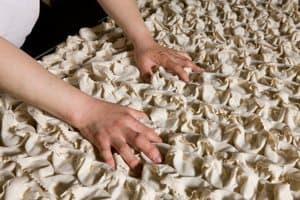
The original Marshall pocket coil was wrapped in unbleached muslin and handmade. Today, the company’s coilers turn out 60 to 80 coils per minute.
“Legend has it that Mrs. M. was bedridden and Marshall created the support system for her, with coils wrapped in unbleached muslin, quilted with horsehair and outer tufted,” Warner says.
Warner keeps a collection of early Marshall mattresses, the oldest of which dates to 1905. Warner’s grandfather, Israel Weiner, and “a bunch of his cousins” all worked for Marshall from 1911 to 1928, Warner says. In 1928, Marshall sold the business and Weiner and his cousins left to found their own company, Innerspring Mattress Co. Marshall Mattress was eventually bought by automobile maker Chrysler. In 1965, Israel Weiner’s son, Harry—Brad Warner’s father—who had himself made a name in the mattress and upholstery business, acquired Marshall Mattress from Chrysler. Warner says his father was a good businessman who built beds to high standards.
“He had gotten his start working for the family business as a salesman on the road making $14 a week,” Warner says. “When he took control of Marshall Mattress, the company’s mattress return rate dropped to under 1%. When I came on board, he didn’t allow me to sell any product until I knew how to make the beds myself.”
A violinist with a degree in economics, Warner had no intention of joining the family business. But in 1977 he did, joining his brother and father. His father died from cancer at age 64 and his brother later left the business. Warner’s wife, Sharan, is now operations manager and the two own and run the company.
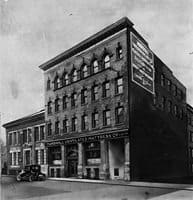
Marshall Mattress traces its roots to 1900 in Toronto.
Warner holds two patents in the United States and Canada pertaining to pocket-spring assembly, Warner says. The Marshall Mattress website describes the bed’s core as “honeycomb-nested cotton-pocket comfort springs.” The mattresses retail for between $1,299 and $6,000. Although it is committed to continuing to manufacture handcrafted beds, the company’s coils are no longer hand filled and sewn as they once were. Coilers turn out 60 to 80 coils per minute. The beds’ pocket-spring construction makes custom sizes simple to produce and the typical turnaround for an order is one to eight days, Warner says.
Warner ticks off the reasons his company has fared well despite tough competition and a difficult economy—“by doing so much of the manufacturing ourselves, working with only the best suppliers and never forgetting our core business, which is retailers who are looking for a high-quality product.”
The company focuses on its core business, which is handcrafted bedding made in a sustainable manner. It also emphasizes safety and reducing industrial waste wherever possible.
“We’re a union shop and it’s very equitable. We don’t operate on piecework. We work on time work. It’s a win-win,” Warner says. The staff averages 15 to 20 years with the company.
Sleep products Inc.
‘Our company’s strength is its people’
| Company | Sleep Products Inc. |
| Specialty | Full line of Restonic-branded mattresses; company also does business as Restonic New Albany |
| Headquarters | New Albany, Ind. |
| Roots | Founded in 1958 by Ralph Quinn Sr. |
| Ownership | Privately held and family owned by the Quinns |
| Facilities | 66,000-square-foot manufacturing plant and headquarters |
| Learn more | www.restonic.com |
World War I veteran—and bedding industry veteran—Ralph Quinn Sr. started Sleep Products Inc. in Louisville, Ky., in 1958 after holding equity and management positions at Kentucky Sanitary Bedding since 1924. The company has stayed in the family. Ralph Sr. passed his knowledge on to sons John and Ralph Jr., who worked together to build Sleep Products Inc. into a regional player.
In 1979, the company acquired a Restonic license and relocated its headquarters to New Albany, Ind. Ralph Jr. died in 1990 and John continued to work in the business right up until his death in 2010. John’s three sons—Bob, Lee and Tom—worked closely with their father and now are at the company’s helm as president, chief executive officer and executive vice president, respectively.
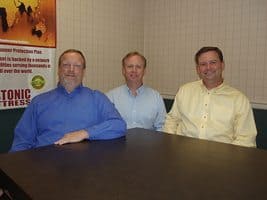
Lee (from left), Tom and Bob Quinn are at the helm of Sleep Products Inc. today.
“My uncle was the engineer. My dad was the marketer with the foresight to realize the opportunities in TV advertising in the 1960s—before anyone else in the industry was doing it,” Bob Quinn says. The Quinns hold their father up as model of how to manage people and prepare the next generation for leadership. “Losing our father was the toughest event in the history of the business,” Bob says. “He was the best boss anyone could ever have. He would let us do our jobs and was always an encourager, a teacher and a leader. And he led by example in terms of work ethic and personal life.”
“More than anything, our company’s strength is its people,” Bob says. “We treat people as we want to be treated.”
The company boasts many long-time employees. Most current middle managers at Sleep Products Inc. have 15 to 20 years with the company, sales staff typically have about 10 years and factory-floor employees average 15 to 20 years. Thoughtful succession planning has been critical to this family business’ success. The second generation made sure the third generation worked with an outside consultant to find their place in the business and prepare them for it.
As for the fourth generation, Lee’s son, Chris, is finding his fit in human resources and manufacturing. Bob’s son, Chad, has handled a sales territory for more than three years. Growing up, Bob and Lee knew they would join the family business, but brother Tom studied law and returned to the company as an adult.
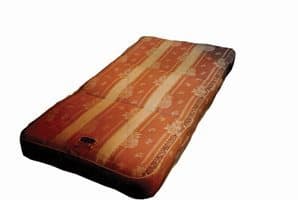
One of the first Sleep Products Inc. beds that were made starting in 1958.
“There is no pressure on the next generation to enter the business. They have to want to do this,” Bob says. “It requires a lot of hard work and they must be willing to put forth the effort. All of us understand the nature of the business and have worked on the factory floor.”
In the 1990s, the company adopted Kaizen principles of continuous improvement, which emphasize the importance of seeking outside help when necessary and being open to change. Last year, a consultant helped Sleep Products Inc. carefully create and implement new management and human resource procedures, encouraging a more transparent management structure and welcoming employee feedback. Fully defined job descriptions, formalized training schedules and employee review procedures also were put in place.
“It is incredible the gain in performance in a business when everyone knows what they’re supposed to do and has the motivation and support to do it,” Bob says. Change is a constant at Sleep Products Inc. When the company started, it manufactured just a few mattress models. “Today, the product lineup is about 100 models in 250 SKUs, from innerspring to specialty sleep” sold into nine Midwestern and Southern states, Bob says. “The customer that launched my grandfather’s success was actually a large hardware distributor, Belknap Hardware & Mfg. Co. in Louisville. Yes, they used to sell mattresses in hardware stores.”
Estee Bedding Co.
Finding a unique niche in contract
| Company | Estee Bedding Co. |
| Specialty | Contract producer of truck, cot, rollaway and dorm mattresses, sofa sleepers and sleep accessories |
| Headquarters | Chicago |
| Roots | Founded in 1924 by Sam Trossman. Purchased by a group of partners in 1989. |
| Ownership | Privately owned by Tim Enright |
| Learn more | www.esteebedding.com |
“I actually don’t know of anyone else who does just contract bedding,” says Tim Enright, owner and president of Estee Bedding Co. in Chicago. The 87-year-old company fills a unique niche, supplying mattresses to a variety of segments—from trucks to dorms.
The name “Estee” is derived from founder Sam Trossman’s initials. He was a Russian Jewish immigrant who settled in Chicago and built a successful mattress business. In 1989, Enright and some other investors, including his father, purchased the business from Trossman’s sons, who were struggling to survive in the increasingly competitive Chicago marketplace.
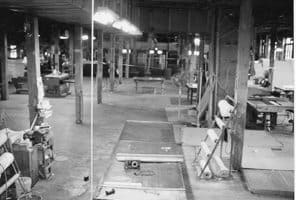
The Estee Bedding Co. manufacturing plant circa 1950 is shown here. Today, the company’s facility is ISO/TS 16949 certified.
Under Enright’s direction, the company switched focus. Without the help of his father, who Enright says had “thrown up his hands at the mess” shortly after the purchase and returned to retirement in Florida, Enright implemented lean manufacturing principles, sought out new market niches and turned the business around. In the ensuing years, he also bought out his remaining partners. He credits lean manufacturing and Six Sigma exercises with helping the company survive economic downturns. Contract manufacturing was a part of the company’s original success under Trossman.
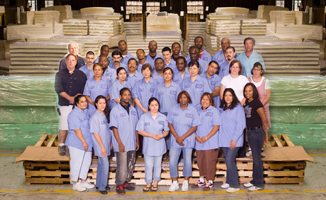
Estee workers manufacture mattresses for a variety of uses, including in trucks, on cots and in dorm rooms.
The company flourished during World War II and into the 1950s, boosted by contract sales of all-cotton, ticking-stripe mattresses to the U.S. military. Estee then moved on to become a major supplier to large Midwestern retailers like Marshall Field’s and Goldblatt’s. By the 1970s, though, its retail heyday had largely waned. Enright says he turned things around by building solid, long-term relationships with major contract clients. Many customers are Fortune 500 companies in the transportation, hospitality and dorm segments.
“We will go through hoops to stay ahead of our customers’ needs and to be of value to them,” Enright says. “They know they have a reliable partner in us.”
As part of Estee’s commitment to being a reliable supplier and helping its customers meet new requirements in their industries, the manufacturing facility has earned ISO/TS 16949 certification, an internationally recognized quality management system based on ISO 9001 and tailored to the automotive industry supply chain. Enright entertains no thought of returning to the retail bedding sector.
“It’s so competitive in the Chicago market and I can’t imagine the advertising and personnel I’d have to invest in,” he says. But he is open to other changes to the company.
In 2010, Estee launched an e-commerce website that sells commercial mattresses, as well as pillows, pads and protectors. As far as succession planning goes, Enright holds out hope. He says the oldest of his four children interned at the plant last summer and “has expressed interest in joining the family business.”
McRoskey Mattress Co.
Embracing what works, from the past or the present
| Company | McRoskey Mattress Co. |
| Specialty | High-end handmade innerspring bed sets |
| Headquarters | San Francisco |
| Roots | Founded in 1899 by Edward and Leonard McRoskey |
| Ownership | Privately held by sole owner Robin McRoskey Azevedo, granddaughter and great-niece of the founders |
| Facilities | Manufacturing facility and two retail showrooms in northern California |
| Learn more | www.mcroskey.com |
Its factory floor filled with custom-made springs and layers of cotton fiber, McRoskey Mattress Co. in San Francisco builds mattresses and traditional box springs in much the same way its founders Edward and Leonard McRoskey first did in 1899.
The company is currently owned by Edward’s granddaughter, Robin McRoskey Azevedo, who serves as president and chief executive officer. The beds are built at a factory in San Francisco and sold in two McRoskey showrooms, one at the company’s original three-story location in that city and one in Palo Alto, Calif.
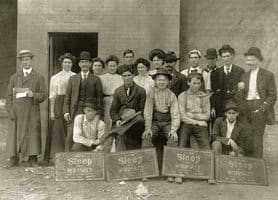
McRoskey Mattress Co. still manufactures its mattresses by hand, as it has throughout the company’s history.
“Being made locally is a big advantage today and it’s our answer to ‘green’, ” Azevedo says. “It connotes trustworthiness and really resonates with today’s consumer, as of course, does the fact we are an old, family business.”
Another advantage of being a small factory direct, Azevedo says, is that McRoskey fully understands both its customer and its product. The direct contact with—and feedback from—consumers is invaluable, as are the long-term relationships the company has maintained with its customers. At McRoskey, they proudly do things the old-fashioned way, by hand and from scratch.
The company is a vertical producer in that it owns equipment—some of it purchased in the 1940s and 1950s—for garneting, tufting and wire forming. Only recently did McRoskey give up its traditional ticking-stripe look, switching to an all-cotton damask with a geometric motif.
“Our machinery is simple and doing things simply—keeping construction techniques and materials the same as they’ve always been—has allowed us to continue to build a better mattress,” Azevedo says.
When she started in the family business 30 years ago, the company offered 15 different comfort levels—many of which never sold. Azevedo had a hunch that simplifying the product offerings would sell more beds. It did. Today, there are three lines priced by size and available in two to four comfort levels.
“We learned it is easier for a customer if they have fewer choices,” Azevedo says. “The simpler the presentation, the easier the sale for both customer and RSA.”
There have been other changes at McRoskey over the years. The company has an informative website, as well as a new information technology system and embraces relationship marketing—all great tools for recession-proofing your business, Azevedo says.
But at a company that comfortably mixes old and new, McRoskey also hangs onto a trove of tens of thousands of handwritten index cards that document every mattress sold since 1921. Influenced by growing consumer interest in specialty sleep, in 2011, the company launched a new hybrid collection featuring natural latex, a knit cover and a McRoskey innerspring core. Despite a higher price tag, McRoskey byDESIGN will account for 20% of total sales this year.
The company routinely fills phone orders, shipping beds to loyal customers all over the world.
Yet a Los Angeles showroom that opened in 2001 was closed in 2003. “Spreading ourselves out is not what we are geared to. Our focus remains in the Bay Area. It’s the market we know best,” Azevedo says. “We build to order and we are local, local, local.”
Gold Bond
Father & son are passionately hands-on
| Company | Gold Bond |
| Specialty | Innerspring and specialty mattresses, as well as futons |
| Headquarters | Hartford, Conn. |
| Roots | Founded in 1899 by Isadore Naboicheck |
| Ownership | Privately held and run by the Naboicheck family |
| Learn more | www.goldbondmattress.com |
“My grandparents were immigrants from Ukraine. Their house was their shop and factory. There was no divide between work and family. It was a very hands-on family business and that hasn’t changed,” says Bob Naboicheck, owner and president of Gold Bond in Hartford, Conn. “Growing up, the business dominated our family life, even on weekends and holidays. Gold Bond’s culture and principles haven’t changed since 1899.”
By the end of World War II, the company’s hospitality and retail businesses were thriving. In subsequent decades, while many independents were rolled up in buyouts or simply shut their doors, Gold Bond soldiered on.
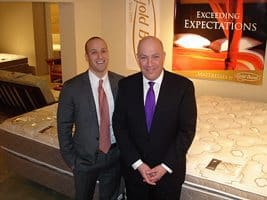
Skip Naboicheck (left), is the latest family member to join the business, working for his father, Gold Bond President Bob Naboicheck
“During the ’60s, ’70s and onward, national brands and franchising became the norm in the mattress business,” Bob says. “For better or worse, I don’t believe we ever gave it a serious thought.”
Naboicheck was pulled into the business at about age 12, when his father, Butch, began taking him to industry events hosted by the National Association of Bedding Manufacturers, which later became the International Sleep Products Association. He also hung around at the plant during school vacations, helping out while trying to stay out of the way. Today, he’s always “on,” whether it’s traveling to retailers to provide training or taking phone calls from customers at home on weekends.
“My business cards have all of my phone numbers,” Bob says. “Customers can always reach me. And my salespeople are the same. We are partners with our customers.”
Bob’s son, Skip, entered the business early, too. At age 16, he was loading trucks during school vacations and traveling with his dad and sales representatives to meet customers. Today, Skip serves as vice president.
“I discovered I really enjoyed it and I absorbed my dad’s passion for this business,” Skip says. “It resonates with everyone, right to the factory floor. We know everyone who works here—and their families and children. It’s a completely unique working environment.”
He adds: “I feel a wonderful connection to my family, my grandfather and my great-grandfather—and all their history.”

Gold Bond has built a reputation for making traditional innerspring mattresses and box springs, though it has branched into futons and specialty sleep.
Gold Bond produces innerspring mattresses, including a line of traditional two-sided beds. It’s also known for futons and now offers specialty sleep, too. All is manufactured at Gold Bond’s Hartford plant and sold at more than 400 independent retailers on the East Coast. Staying small and independent keeps Gold Bond closely connected to its customers.
“When customers deal with us, they are talking right to the person who can make decisions,” Skip says. “We can shift production and turn on a dime. When customers have special requests, the answer is usually ‘yes’. ”
One of the unique things Gold Bond does, Skip says, is to hit the road for three to five days at a time with a dozen bed models loaded on a Gold Bond truck. “We bring the mattress showroom right to customers’ doors,” he says. “It’s a practice that has been going on for years and allows customers to touch and feel new beds and even test their appearance on the floor before placing an order.”
Colchones Wendy
Stretching beyond its small-producer roots
| Company | Colchones Wendy |
| Specialty | Promotional to moderately priced proprietary Wendy and Sleepcare brands, as well as moderate to high-end Serta-branded beds. The company also manufactures foam, spring units, insulator pads and shoddy. |
| Headquarters | Guadalajara, Mexico |
| Roots | Founded in 1952 by Manuel López Garmendia, father of current owner Manuel López Castillejos |
| Ownership | Privately held by the López family. |
| Learn more | www.wendy.com.mx |
Colchones Wendy, headquartered in Guadalajara, Mexico, was founded in 1952 by Manuel López Garmendia as a small, local producer of all-cotton mattresses. The company grew steadily in the decades that followed, becoming a regional mattress supplier.
In the past decade, the company has grown further, expanding its footprint to the whole of Mexico after acquiring a Serta license for the country in 2000. In 2002, the company consolidated its Guadalajara mattress manufacturing into a single plant and opened two new factories to cover Mexico, one in Monterrey and another in Mérida.
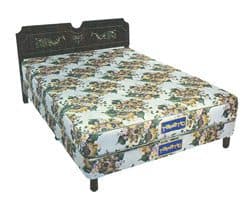
An original Wendy mattress.
Vertical integration is key. Each plant manufactures its own spring units. Other components, such as foam and insulator pads, are sent from the company’s Guadalajara facility. Its foam-pouring plant supplies not just its own mattress factories but other mattress makers and other industries in Mexico, as well.
The Serta license helped the company achieve a goal of entering new markets by expanding its offerings beyond the promotional and moderately priced Wendy and Sleepcare brands the company was known for. The company’s five largest Serta customers are national retailers and Colchones Wendy’s proprietary brands have piggybacked on that success. The Serta models in its lineup open at moderate price points—just below where Wendy tops out—and rise into the luxury range.

From its roots in Guadalajara, Mexico, the company has expanded. This plant is in Mérida, Mexico.
Colchones Wendy has a loyal, well-paid work force with little turnover, says Manuel López Castillejos, chief executive officer, owner and son of the founder. A typical employee has been with the company 15 years or more and some have more than 30 years on the factory floor.
The Mexican market has some unique attributes, López says. Mexican consumers prefer innerspring beds. Expensive specialty foam beds have made little headway, not just because of the price barrier, but because inexpensive polyurethane foam beds made in the 1960s, 1970s and 1980s have left a lingering “bad connotation” in consumers’ minds, he says.
Ninety-five percent of Colchones Wendy’s production is innerspring, made with Bonnell and Serta-branded Miracoil units. In Mexico, most mattress sales are through mass merchants like Walmart. There are door-to-door mattress sales, too, but very few sleep shops.
“The big difference between the U.S. and Mexican mattress market is the buying power of the people,” López says. “The average selling price is much lower in Mexico.” The company has survived a series of Mexican economic crises through its “quick reactions, austere organization structure, low debt and the trust built with suppliers and customers,” López says.
In fact, Colchones Wendy has found that one of the ways small mattress producers remain successful is to not stay so small after all.
“We are very optimistic that our revenues will improve as Mexico slowly becomes an economic power and the spending power of its population will gradually increase,” López says. “We have prepared for this in the last 10 years, modernizing our equipment, increasing our capacity and opening new factories.”




